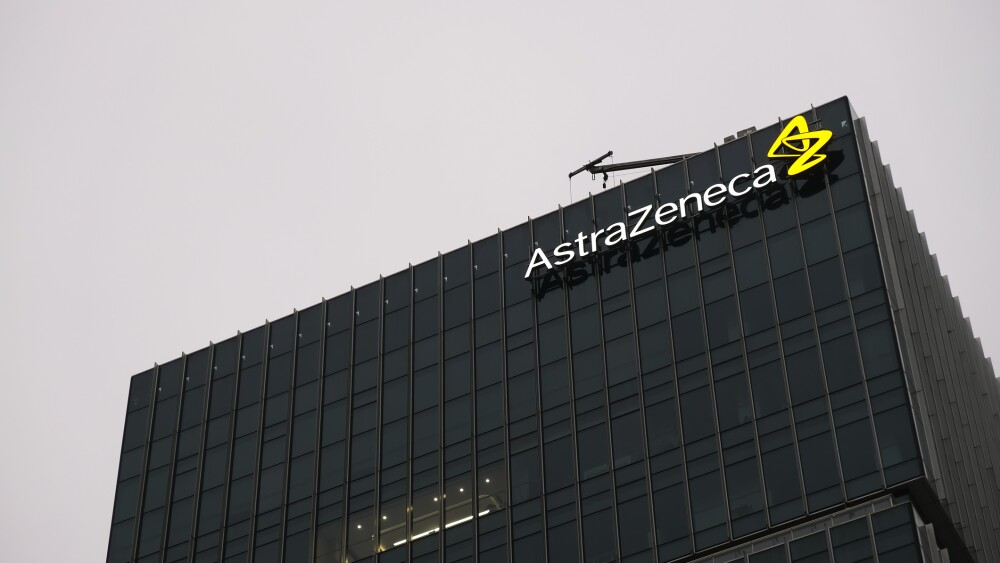Indolent Lymphoma Market Outlook 2025-2035:
The 7 major indolent lymphoma market are expected to exhibit a CAGR of 6.11% during 2025-2035. The Indolent Lymphoma market is influenced by the rising use of non-invasive and minimally invasive treatments, including advanced monoclonal antibodies, targeted therapies, and immunotherapy methods, which manage the condition effectively while lowering treatment-associated toxicities and recovery durations. These innovative treatments are especially effective in addressing cancerous lymphocytes, managing disease advancement, and adjusting the immune system to fight malignancies, resulting in better clinical results and improved patient quality of life. These methods reduce the necessity for intensive chemotherapy and radiation, making them appealing to patients looking for effective and convenient options with reduced side effects and improved tolerability.
Advances in Early Detection and Diagnostic Technologies: Driving the Indolent Lymphoma Market
Contemporary diagnostic and treatment technologies are profoundly altering the Indolent Lymphoma market, enhancing disease management and patient results. Sophisticated imaging methods like PET-CT and high-resolution MRI allow for intricate visualization of lymph nodes and disease advancement, aiding in accurate evaluation and tailored treatment strategies. These innovations are enhanced by molecular diagnostics such as next-generation sequencing (NGS) and liquid biopsies, which assist in detecting genetic mutations and biomarkers that influence the disease. These tools assist in choosing specific therapies and tracking disease advancement or recurrence. The incorporation of artificial intelligence (AI) into diagnostic systems improves precision by facilitating automated identification, disease categorization, and predictive analysis, minimizing dependence on subjective assessments. Non-invasive treatments, such as advanced monoclonal antibodies, bispecific T-cell engagers, and immune checkpoint inhibitors, are developing effective options with minimal side effects and faster recovery periods. Wearable devices like biosensors, provide real-time tracking of patient health and treatment reactions, facilitating outpatient care and allowing prompt therapy modifications when necessary. These technologies are especially advantageous in isolated regions, facilitating prompt interventions and enhanced results. Telemedicine platforms are essential in expanding access to specialized hematologic evaluations, distant diagnosis, and treatment guidance, making advanced care more available for indolent lymphoma patients in various areas.
Request a PDF Sample Report: https://www.imarcgroup.com/indolent-lymphoma-market/requestsample
Development of Novel Therapies and Pharmacological Treatments: Contributing to Market Expansion
The Indolent Lymphoma market is growing due to the launch of new therapies and cutting-edge pharmaceutical treatments. Novel oral and injectable drugs are being created to address resistant cancer cell groups and adjust the immune response, proving crucial in managing disease advancement and enhancing patient results. These therapies demonstrate significant effectiveness, reduced side effects, and more precise mechanisms, leading to improved patient satisfaction and better long-term results. Investigations into biological medications are progressing, especially for addressing moderate to severe instances of Indolent Lymphoma, concentrating specifically on chronic inflammatory disorders and disease recurrence. Monoclonal antibodies directed at particular markers like CD19, CD20, and pro-inflammatory cytokines, such as interleukin-6 and interleukin-10 have demonstrated potential in decreasing tumor growth and altering the immune response. Progress in drug delivery methods, including nanoparticle carriers, liposomal formulations, and sustained-release injectables, enables localized and targeted administration of drugs, which decreases systemic exposure and lowers adverse effects. Adjunct therapies like immunomodulators and treatments focused on reestablishing immune balance, are increasingly recognized as supportive approaches to boost the body’s innate defenses. Therapeutic combinations that merge targeted therapies with immunotherapies or chemotherapy drugs have demonstrated promising results in addressing the complex pathophysiology of Indolent Lymphoma. Non-invasive medical treatments like checkpoint inhibitors and bispecific antibodies are gaining traction due to their accuracy and focus on patient needs, providing effective options to conventional chemotherapy methods.
Buy Full Report: https://www.imarcgroup.com/checkout?id=8042&method=809
Emerging Therapies in Indolent Lymphoma Market
Duvelisib: Secura Bio
Duvelisib is an oral dual inhibitor of PI3K-δ and PI3K-γ, approved for the treatment of relapsed or refractory indolent lymphomas, including follicular lymphoma and chronic lymphocytic leukemia. By targeting key signaling pathways involved in tumor growth and survival, it helps manage disease progression while offering a convenient oral dosing option.
MK-2140: Merck Sharp & Dohme
Zilovertamab vedotin (MK-2140) is an antibody-drug conjugate targeting the receptor tyrosine kinase-like orphan receptor 1 (ROR1), which is overexpressed in various B-cell malignancies, including indolent lymphomas. By delivering a cytotoxic agent directly to ROR1-expressing cells, it aims to selectively eliminate malignant cells while minimizing damage to normal tissues. Clinical trials are ongoing to assess its safety and efficacy in patients with relapsed or refractory B-cell lymphomas.
Drug Name | Company Name | MOA | ROA |
Duvelisib | Secura Bio | Phosphatidylinositol 3 kinase delta inhibitors; Phosphatidylinositol 3 kinase gamma inhibitors | Oral |
MK-2140 | Merck Sharp & Dohme | Tubulin inhibitors; Tubulin polymerisation inhibitors | Intravenous infusion |
Detailed list of emerging therapies in Indolent Lymphoma is provided in the final report…
Leading Companies in the Indolent Lymphoma Market:
The market research report by IMARC encompasses a comprehensive analysis of the competitive landscape in the market. Across the global Indolent Lymphoma market, several leading companies are at the forefront of developing integrated platforms to enhance the management of Indolent Lymphoma. Some of the major players include Secura Bio, Merck Sharp & Dohme, and others. These companies are driving innovation in the Indolent Lymphoma market through continuous research, diagnostic tools, and expanding their product offerings to meet the growing demand for Indolent Lymphoma.
Key Players in Indolent Lymphoma Market:
The key players in the Indolent Lymphoma market who are in different phases of developing different therapies are Secura Bio, Merck Sharp & Dohme, and Others.
Regional Analysis:
The primary markets for Indolent Lymphoma encompass the United States, Germany, France, the United Kingdom, Italy, Spain, and Japan. Based on IMARC’s forecasts, the United States not only has the largest patient population for Indolent Lymphoma but also constitutes the largest market for its therapy. Recently, new therapies have been developed for Indolent Lymphoma, such as next-generation targeted treatments, monoclonal antibodies, and small molecule inhibitors aimed at more accurately interfering with the molecular pathways that drive the disease. These treatments seek to improve clinical results by focusing on crucial oncogenic signaling pathways, increasing effectiveness while minimizing off-target effects and toxicity. Additionally, improvements in drug compositions and administration methods enhance treatment results while reducing adverse effects.
The creation of advanced diagnostic instruments is allowing for earlier and more precise detection of indolent lymphoma subtypes and prognostic indicators, paving the way for tailored treatment strategies with improved results. Molecular profiling, next-gene sequencing, and liquid biopsy technologies now enable clinicians to identify genetic mutations and other biomarkers essential for making therapeutic decisions. These tools enhance diagnosis as well as aid in real-time disease tracking and modifications to treatment. Main elements propelling the Indolent Lymphoma market growth is the rising research and development (R&D) expenditures, an expanding array of innovative treatments, and partnerships between pharmaceutical companies, diagnostic organizations, and research entities. AI-driven diagnostic tools and telehealth platforms are being more widely utilized, enhancing accessibility to specialist consultations and medical care in distant regions. As therapeutic and diagnostic solutions advance, regions like North America and Europe persist in driving innovation, steering the global indolent lymphoma market toward continuous expansion.
Key information covered in the report.
Base Year: 2024
Historical Period: 2019-2024
Market Forecast: 2025-2035
Countries Covered
- United States
- Germany
- France
- United Kingdom
- Italy
- Spain
- Japan
Analysis Covered Across Each Country
- Historical, current, and future epidemiology scenario
- Historical, current, and future performance of the Indolent Lymphoma market
- Historical, current, and future performance of various therapeutic categories in the market
- Sales of various drugs across the Indolent Lymphoma market
- Reimbursement scenario in the market
- In-market and pipeline drugs
Competitive Landscape:
This report offers a comprehensive analysis of current Indolent Lymphoma marketed drugs and late-stage pipeline drugs.
In-Market Drugs
- Drug Overview
- Mechanism of Action
- Regulatory Status
- Clinical Trial Results
- Drug Uptake and Market Performance
Late-Stage Pipeline Drugs
- Drug Overview
- Mechanism of Action
- Regulatory Status
- Clinical Trial Results
- Drug Uptake and Market Performance
Ask Our Expert & Browse Full Report with TOC: https://www.imarcgroup.com/indolent-lymphoma-market/toc
IMARC Group Other Reports:
Familial Adenomatous Polyposis Market: The 7 major familial adenomatous polyposis markets are expected to exhibit a CAGR of 4.23% during 2024-2034.
Acute Respiratory Distress Syndrome (ARDS) Market: The 7 major acute respiratory distress syndrome (ARDS) markets are expected to exhibit a CAGR of 10.1% during 2024-2034.
Inguinal Hernia Market: The 7 major inguinal hernia markets are expected to exhibit a CAGR of 5.22% during 2024-2034.
Solid Tumors Market: The 7 major solid tumors markets reached a value of US$ 170.3 Billion in 2023. Looking forward, IMARC Group expects the 7MM to reach US$ 375.4 Billion by 2034, exhibiting a growth rate (CAGR) of 7.45% during 2024-2034.
Geographic Atrophy Market: The 7 major geographic atrophy markets reached a value of US$ 24.2 Billion in 2023. Looking forward, IMARC Group expects the 7MM to reach US$ 44.5 Billion by 2034, exhibiting a growth rate (CAGR) of 5.7% during 2024-2034.
Gastrointestinal Stromal Tumor Market: The 7 major gastrointestinal stromal tumor markets reached a value of US$ 493.6 Million in 2023. Looking forward, IMARC Group expects the 7MM to reach US$ 810.2 Million by 2034, exhibiting a growth rate (CAGR) of 4.61% during 2024-2034.
Contact US
IMARC Group
134 N 4th St. Brooklyn, NY 11249, USA
Email: Sales@imarcgroup.com
Tel No:(D) +91 120 433 0800
Phone Number: - +1 631 791 1145, +91-120-433-0800






